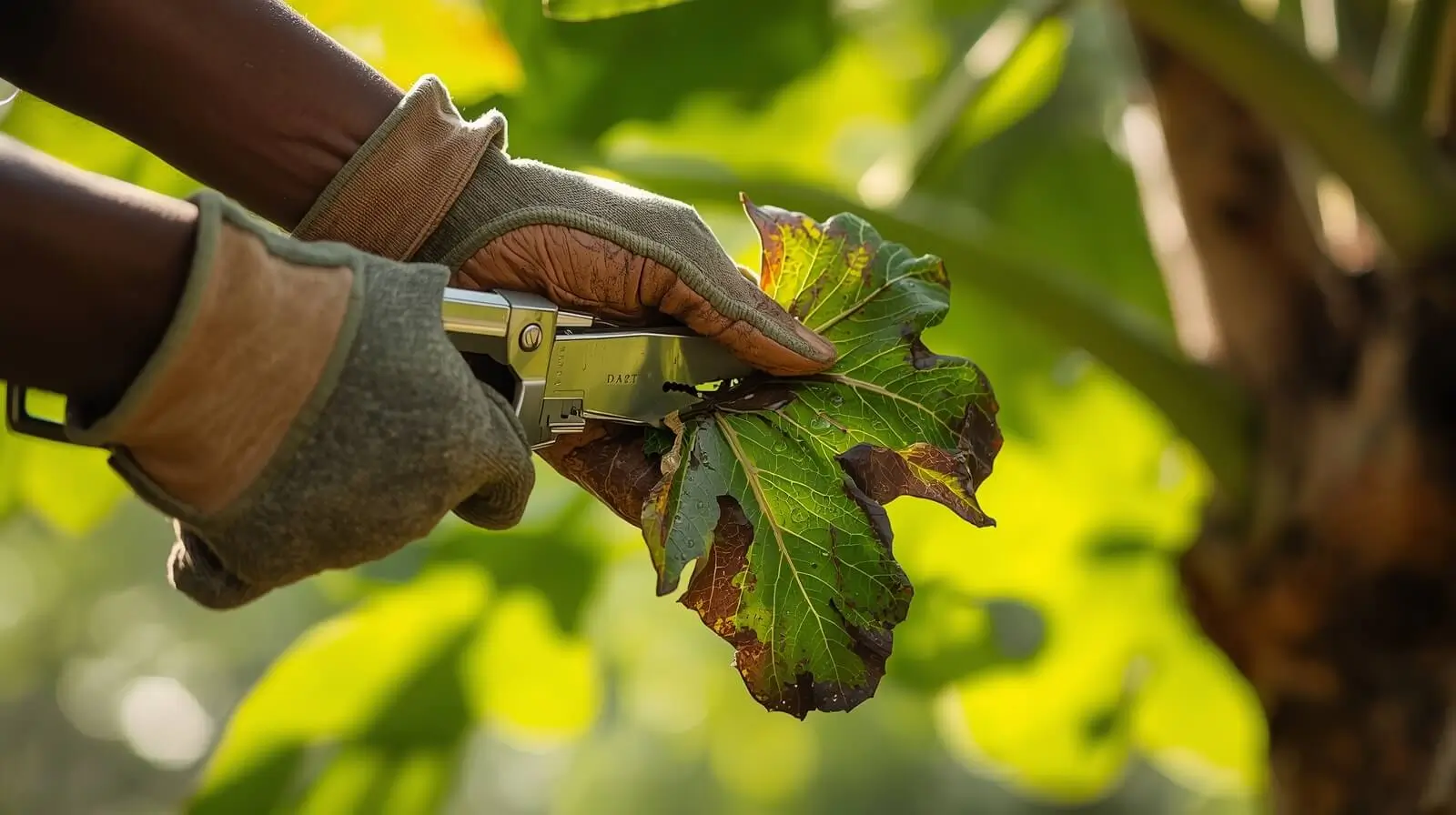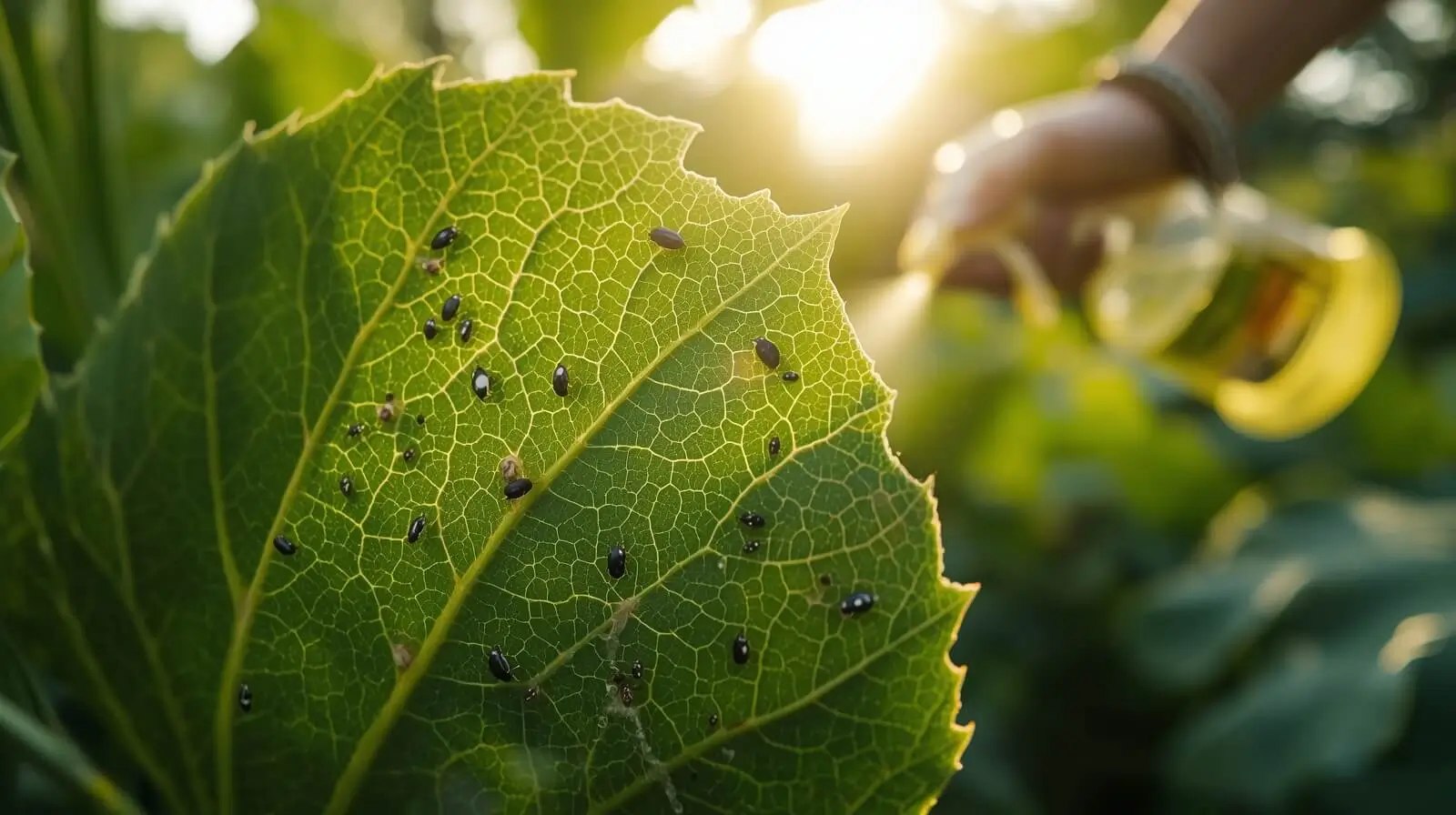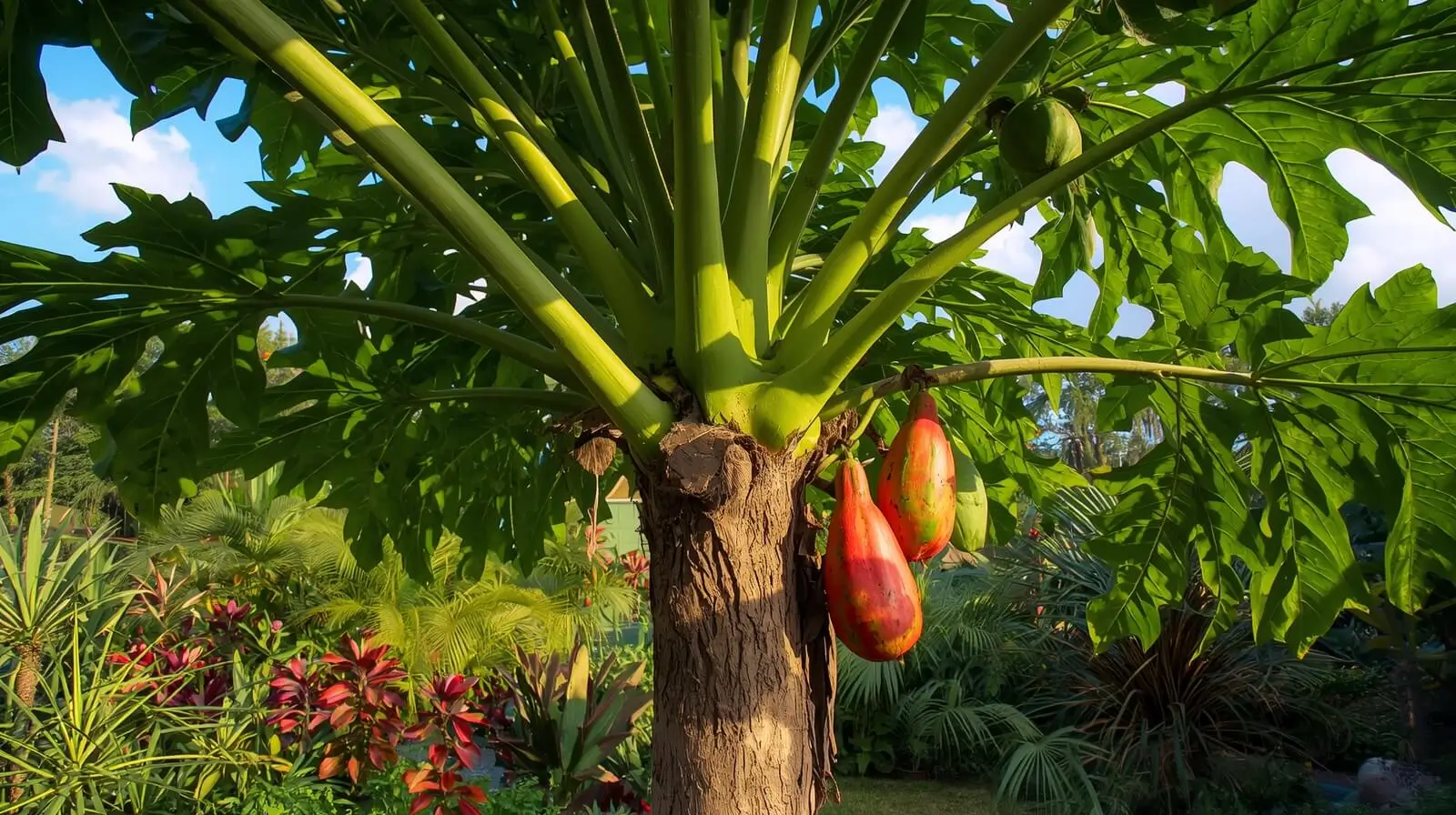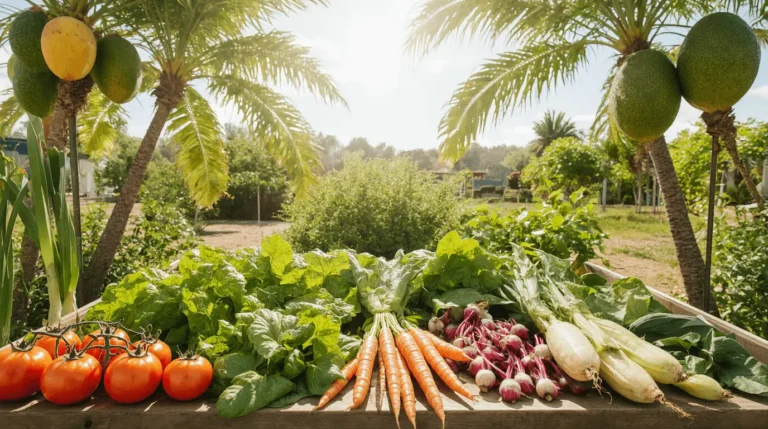When I first started cultivating a red lady papaya tree at home, I realized how much opportunity it presents for gardeners who enjoy working with tropical plant varieties, because its vibrant appearance and delicious, nutrient-rich fruit truly captivates anyone who grows it outdoor; and while the process requires proper preparation, from fertile soil planting to careful management of pest issues and challenges that come naturally with navigating tropical conditions, the journey becomes smoother once you understand how self-fertile this plant is and how rapid its growth can be when nurturing it in the right spaces, because the beauty of this hardy tree is that it not only adapts well, but also delights growers who enjoy seeing something so unique, so striking, and so full of nature and health, especially when you experience firsthand how it thrives successfully in various climates with consistent care and a rich growing routine that is known to support both productivity and long-term plant strength. red lady papaya tree
1. Understand the Red Lady Papaya: Characteristics and Benefits
When I first started growing the red lady papaya tree, I was impressed by how this Carica papaya stands out as a compact, fast-growing tropical plant with a striking appearance that instantly adds beauty to outdoor spaces. Its large, lobed, palmate leaves form a lush canopy, and the tree usually reaches heights of 8 to 10 feet, which makes it an ideal choice for home gardeners who want something manageable yet productive. I especially love how self-fertile it is, allowing the tree to produce fruit without extra pollination, and how the oblong papayas, often weighing around 1 to 3 pounds, develop vibrant, orange-red flesh that tastes sweet, juicy, and perfectly ripe when picked at the right time. The fruit is also rich in vitamins A and C, contains the powerful digestive enzyme papain, and supports heart health and overall wellness, which is why individuals who want to enrich diets with nutritious fruit often see it as a popular choice.
For gardeners exploring more options beyond Red Lady, our papaya tree varieties explained article helps compare growth habits, fruit flavors, and climate suitability.
From what I’ve experienced, recent studies continue to highlight the significant health benefits of this tropical fruit tree, especially its role in lowering cholesterol and aiding digestion, making it more than just a gardening project. Its ornamental foliage brings impressive aesthetic value to any garden landscape, and the tree works beautifully as a dual-purpose plant that enhances both culinary appeal and visual appeal with its attractive features and steady quick-yield habit. Many gardeners shop at places like Everglades Farm or browse the Fast-Growing Trees Collection when looking for this exceptional variety, often pairing it with other greenery to complete their home gardening needs.
For an in-depth overview of papaya tree care in Florida, you can also visit the UF/IFAS guide on papaya growing in home landscapes.
2. Gather Tools and Prepare Your Garden for Planting
When I first started planting a red lady papaya tree, I learned how crucial it is to gather all the essential tools and materials before anything else, because having a shovel, trowel, watering can, hose, organic compost, mulch, and a pH tester ready makes the whole process smoother as you prepare your garden; choosing a planting site with direct sunlight for 6-8 hours daily, checking the growing medium, ensuring good drainage, and understanding how slightly acidic or neutral soil within a pH range 6.0 to 7.0 affects nutrient absorption and overall plant health helped me avoid early mistakes, especially when learning to Clear the Area of weeds, rocks, and debris to remove competition for nutrients and moisture, then Amend the Soil to enhance fertility, improve drainage, and create a suitable environment for a papaya plant; and once you Dig the Hole to twice the width and depth of the root ball for a papaya seedling, allow enough room for root expansion, then Add Mulch to retain moisture, suppress weed growth, and prevent anything that may compete for resources, you build a strong foundation for thriving results with essential nutrients, proper care, and successful growth while keeping an eye on potential challenges like pests, diseases, and issues that often affect papaya plants or other tropical fruit trees.
If you want to start papayas right from seeds, make sure to explore our papaya seed germination guide, which explains how to sprout seeds faster and avoid early seedling failures.

- Use a pH tester to Test the Ground and confirm soil balance.
- Clear the Area by removing weeds, rocks, and debris.
- Amend the Soil using organic compost to enhance fertility.
- Dig the Hole wider and deeper than the root ball for proper root expansion.
- Add Mulch to retain moisture and reduce competition from unwanted growth.
3. Plant the Red Lady Papaya: Step-by-Step Instructions
When I first learned how to successfully plant a Red Lady Papaya, I realized that following a few essential steps makes the process smooth and helps the red lady papaya tree adjust quickly. I always start by focusing on how to Prepare the Ground, making sure the soil is well-draining, rich, and supported with organic matter, garden soil, compost, or even a potting mix meant for tropical plants, sometimes enhancing the blend and even applying fungicides to prevent diseases that may affect young plant growth, as mentioned in a detailed user manual I once read for similar trees. The next part is to Position the Seedling carefully at the center of the hole, keeping the top of the root ball level with the surrounding ground, which encourages optimal growth and better stability. Once placed, I always Backfill the Hole using improved soil, gently pressing down to eliminate air pockets that can impede root development, before taking time to Water Thoroughly with deep watering to settle the soil and give the roots immediate access to moisture. After that, I Mulch Again by adding a layer of mulch around the base of the plant, keeping few inches of space from the trunk to prevent rot, retain soil moisture, and help with regulation of soil temperature and moisture levels, something I’ve also seen as beneficial for soursop plants. If I’m working with a tall plant or planting in a windy area, I also Stake if Necessary to offer additional support until a strong root system forms, giving the plant better long-term stability and growth. By adhering to steps like these and integrating best practices from growing tropical fruit plants, you really do effectively set your garden for a thriving and healthy tree.
- Prepare the Ground using organic matter, garden soil, and compost.
- Position the Seedling with the top of the root ball aligned level to the area.
- Backfill the Hole and press down to eliminate air pockets.
- Water Thoroughly to give roots fast moisture access.
- Mulch Again to retain soil moisture and support regulation of heat.
- Stake if Necessary for additional support in a windy area.
4. Maintain Your Papaya Tree: Care, Watering, and Fertilization
- When I first learned how to maintain a Red Lady Papaya tree, I realized the importance of following clear care guidelines, especially with Watering, because Papayas thrive when they receive consistent moisture during dry spells, so I always irrigate thoroughly at least once a week, sometimes increasing frequency in warm weather to keep the soil stays moist but not saturated, especially in areas with limited rainfall, where I may give up to 10 gallons of water per tree and even more when the fruit-bearing period demands necessary daily hydration, something an agribusiness consultant, James Mwangi Ndiritu, once highlighted as essential for optimal plant growth and higher yield.
- I also focus heavily on Fertilization, using a balanced, slow-release fertilizer that can be applied every 6-8 weeks during the growing season, and a 14-14-14 ratio has helped me with promoting robust growth and maximizing fruit production, while mixing organic fertilizers like compost and aged manure to improve soil structure, increase fertility, and meet all nutritional requirements, making sure to apply fertilizers about 15-20 cm from the stem in a trench to properly optimize nutrient uptake.

- Consistent Pruning has also helped me maintain essential for health standards by doing Regular trimming to eliminate dead leaves, clear harmed leaves, and promote new growth, which naturally improves airflow, helping to enhance air circulation and play a role in preventing diseases before they take over the plant.

- When it comes to Pest Management, staying in vigilance is necessary because common pests such as aphids and mealybugs can easily take over if ignored, so I schedule regular inspections to identify infestations early, and I manage pests effectively using organic insecticides or neem oil, which keeps my red lady papaya tree safe without harming the environment.

- During Harvesting, I pick my Papaya fruits once they ripen 5-6 months after planting, waiting until the skin transitions green to yellow and the fruit yields slightly to pressure so I can enjoy the optimal flavor and best quality, while remembering that papaya plants are sensitive to flooding, so I maintain proper drainage and always work to avoid waterlogging during rainy months.

- I also practice Mulching, regularly spreading mulch around the base of papaya plant to retain moisture, regulate ground temperature, and protect overall plant health, especially during the hotter months.

- To maintain long-term productivity, I stay consistent with Monitoring Soil Nutrients by making sure to check soil nutrient levels, adjust fertilization practices, and strengthen support optimal growth, especially during peak fruit production, while watching for common diseases like powdery mildew, anthracnose, and black spot, staying proactive, staying aware, and always working to mitigate issues before they spread.

Read Also:
- Gardening & Plant Care Guide for Thriving Plants
- Tropical Fruit Trees: Grow Exotic Paradise at Home (Guide)
Conclusion
Maintaining a healthy Red Lady Papaya tree becomes much easier once you understand the importance of proper watering, fertilization, pruning, pest control, mulching, and soil monitoring. With consistent care, the tree responds quickly, offering strong growth, vibrant foliage, and a generous harvest. By following the right techniques—just as experienced growers do—you build a thriving papaya garden that stays productive season after season. Whether it’s adjusting your watering schedule during dry spells or improving soil structure with organic fertilizers, each small effort contributes to long-term success and fruitful results.
FAQs
1. How often should I water my Red Lady Papaya tree?
Water the tree once a week, increasing frequency in warm weather or dry spells. In low-rainfall areas, it may need up to 10 gallons of water per tree daily during the fruiting stage.
2. What is the best fertilizer for papaya trees?
Use a balanced slow-release fertilizer such as 14-14-14, applied every 6–8 weeks. Adding organic fertilizers like compost and aged manure improves soil fertility.
3. How can I prevent pests like aphids and mealybugs?
Perform regular inspections and use organic insecticides or neem oil. Early detection helps you manage pests effectively before they harm the tree.
4. When is the right time to harvest papaya fruits?
Harvest when the skin transitions from green to yellow and the fruit yields slightly to pressure. This usually happens 5–6 months after planting.
5. How do I protect my papaya tree from diseases?
Maintain air circulation through pruning, use mulch to regulate temperature, and monitor for diseases like powdery mildew, anthracnose, or black spot. Quick action helps mitigate issues.
6. Why is soil health important for papaya growth?
Healthy soil improves nutrient uptake, supports optimal plant growth, and prevents waterlogging. Check nutrient levels often and adjust your fertilization plan as needed.
7. Can mulching really help my papaya tree?
Yes. Mulching helps retain moisture, protects roots from heat, and supports overall plant health, especially in hot climates.




